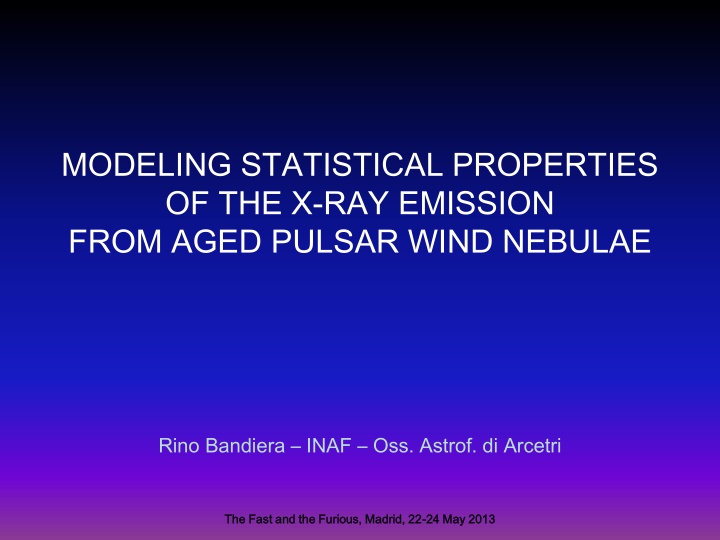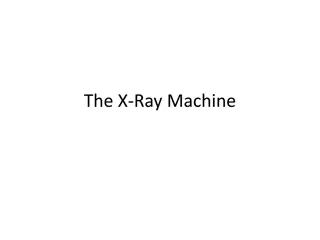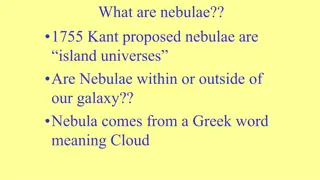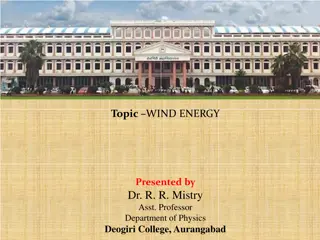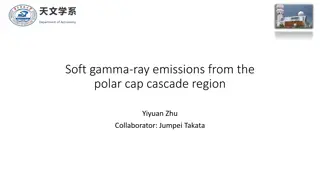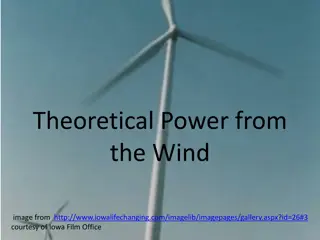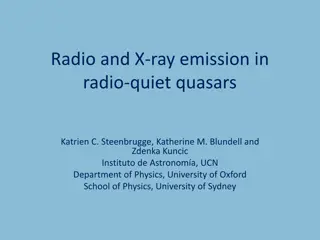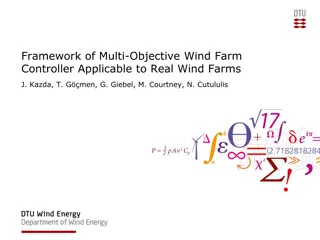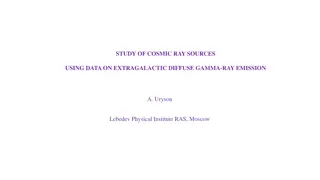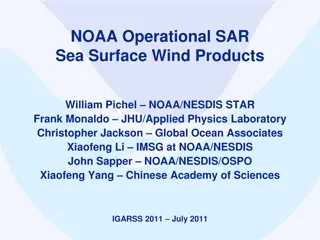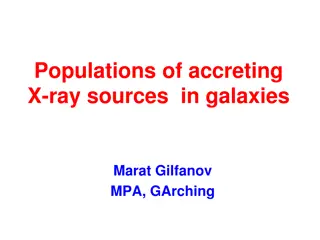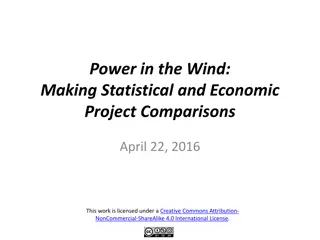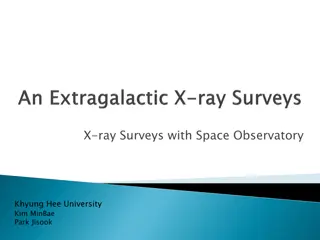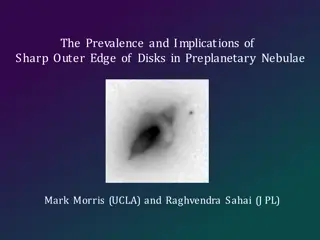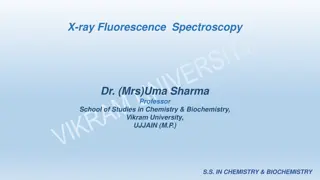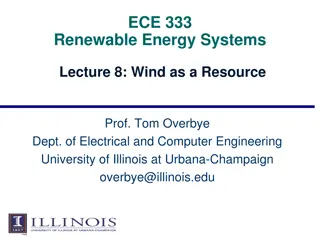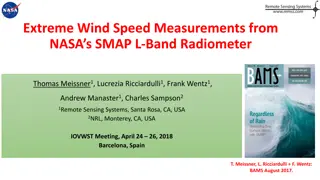Statistical Properties of X-ray Emission from Aged Pulsar Wind Nebulae
Exploring the statistical trends and evolution of X-ray emission from aged pulsar wind nebulae, including correlations with pulsar characteristics and unexpected expansion findings. Proposed explanations shed light on the intriguing behaviors observed in these cosmic phenomena.
Download Presentation

Please find below an Image/Link to download the presentation.
The content on the website is provided AS IS for your information and personal use only. It may not be sold, licensed, or shared on other websites without obtaining consent from the author.If you encounter any issues during the download, it is possible that the publisher has removed the file from their server.
You are allowed to download the files provided on this website for personal or commercial use, subject to the condition that they are used lawfully. All files are the property of their respective owners.
The content on the website is provided AS IS for your information and personal use only. It may not be sold, licensed, or shared on other websites without obtaining consent from the author.
E N D
Presentation Transcript
MODELING STATISTICAL PROPERTIES OF THE X-RAY EMISSION FROM AGED PULSAR WIND NEBULAE Rino Bandiera INAF Oss. Astrof. di Arcetri The Fast and the Furious, Madrid, 22 The Fast and the Furious, Madrid, 22- -24 May 2013 24 May 2013
TOWARDS A GOOD SAMPLE OF PULSAR WIND NEBULAE Originally relatively few objects In radio Very few X-ray PWNe Labelled as short-lived (up to ~104 yr)Weiler & Panagia 1978 A change of paradigm A large fraction of H.E.S.S. unidentified sources are PWNe e.g. Hinton & Hofmann 2009 Follow-up campaigns in X-rays (nebula) & radio (pulsar) They are typically aged PWNs Now about 70 objects known Some intriguing statistical trends Weiler 1983 Seward 1989 (~104 - 106 yr) e.g. Kargaltsev et al. 2013 The Fast and the Furious, Madrid, 22 The Fast and the Furious, Madrid, 22- -24 May 2013 24 May 2013
EVOLUTION OF X-RAY EMISSION Mattana et al. 2009 Evidence for an evolution of the X-ray luminosity (while no clear correlation in the TeV range). Excellent correlation with Edot and /or with PSR spin-down age (Believe it or not) Proposed explanation: The X-ray emission traces the recent history of the nebula, whereas the -ray emission traces a longer history, possibly up to the pulsar birth. The Fast and the Furious, Madrid, 22 The Fast and the Furious, Madrid, 22- -24 May 2013 24 May 2013
EVOLUTION IN SIZE Bamba et al. 2010 Search for very low surface brightness X-ray emission around pulsars with ages up to ~105 yr Unexpected result: A systematic study of a sample of eight of these PWNe, together with Chandra data sets, has revealed that the nebulae keep expanding up to 100 kyr The Fast and the Furious, Madrid, 22 The Fast and the Furious, Madrid, 22- -24 May 2013 24 May 2013
PROPOSED EXPLANATION BY BAMBA ET AL. Stringent limit on synchrotron lifetimes for the electrons MSH 15-52 Extensions of 20-30 pc would require B~1 G o B must decrease in time down to very low values o Diffusion is important, so that time scale for the escape is smaller than the PWN age. o Anyway, large extents for old PWNe are surprising. They should have been crushed by the reverse shock. Kes 75 The Fast and the Furious, Madrid, 22 The Fast and the Furious, Madrid, 22- -24 May 2013 24 May 2013
A DIFFERENT AND MAYBE NATURAL KIND OF EXPLANATION (Bandiera, in prep.) HYPOTHESIS: the observed (Bamba et al.; Mattana et al.) correlations DO NOT outline the evolution of a typical PWN. They originate instead as a COMBINED EFFECT of PWNe evolving under different conditions. Relevant parameters are: AND, IN THE SAMPLE, ALL POSSIBLE CASES ARE WEIGHTED WITH THEIR PROBABILITY OF DETECTION The Fast and the Furious, Madrid, 22 The Fast and the Furious, Madrid, 22- -24 May 2013 24 May 2013
MODELING THE PWN EVOLUTION PWN interacting with the outer SNR When the PWN is brighter? When it is very young At the beginning of Sedov phase (reverberation phase) PWN crushed by the SNR reverse shock, strong increase of B One-zone modelse.g. Gelfand et al. 2009, Bucciantini et al. 2011 X-rays Gelfand et al. 2009 The Fast and the Furious, Madrid, 22 The Fast and the Furious, Madrid, 22- -24 May 2013 24 May 2013
COMPLEMENTARITY BETWEEN ANALYTIC & NUMERICAL MODELS Functional dependence on the various parameters 1st Phase (t < o): - PWN expanding in SN ejecta (flat) - constant Edot Energy eq.: Magnetic flux cons.: 2nd Phase (t < o , still free expanding ejecta) The Fast and the Furious, Madrid, 22 The Fast and the Furious, Madrid, 22- -24 May 2013 24 May 2013
PWN crushing (at a time t >> o) reverberation Reverse shock, beginning of Sedov phase PWN compression, B enhancement (with flux conservation) FROM TO The Fast and the Furious, Madrid, 22 The Fast and the Furious, Madrid, 22- -24 May 2013 24 May 2013
A FICTITIOUS TIME DEPENDENCE ASSUMPTIONS: Leading dependence is that on ISM density (large variations) Aged PWNe preferentially detected near the crushing phase ISM density can be associated to either time, or Edot (for a dipole-like case) leading to the following fictitious trends: The Fast and the Furious, Madrid, 22 The Fast and the Furious, Madrid, 22- -24 May 2013 24 May 2013
LINKING TO A NUMERICAL MODEL Gelfand et al. 2009 Gelfand et al. 2009 Parameters: Derived quantities: Matching Bamba et al. relation Required nISM values are quite reasonable with zero free parameters The Fast and the Furious, Madrid, 22 The Fast and the Furious, Madrid, 22- -24 May 2013 24 May 2013
ON THE X-RAY LUMINOSITY Synchrotron basics: Adiabatic vs synch-dominated evolution For the X-ray emitting electrons: Numerical model Numerical model nearly consistent with nearly consistent with Gelfand et al. 2009 Gelfand et al. 2009 Emission drops at teq, where tadiab=tsynch tc-teqtc+ Adiabatic evolution at tc- Synchrotron-dominated evolution, at tc+ ??? The Fast and the Furious, Madrid, 22 The Fast and the Furious, Madrid, 22- -24 May 2013 24 May 2013
Evolution of the synchrotron spectrum: (cutoff rapidly moving towards lower frequencies) The Fast and the Furious, Madrid, 22 The Fast and the Furious, Madrid, 22- -24 May 2013 24 May 2013
BUT, if PWN X-ray emission switches off at teq, Bamba et al. empirical relation cannot be explained any longer !! Req is independent of nISM ! In order to save that explanation X-ray emitting electrons must be adiabatically dominated up to tc+ ! A LESS EFFECTIVE COMPRESSION FROM THE REVERSE SHOCK ? The Fast and the Furious, Madrid, 22 The Fast and the Furious, Madrid, 22- -24 May 2013 24 May 2013
X-RAY EMISSION Assume 2 power-law for the injected electrons. Apart from a logarithmic factor (about 20) at the denominator, at t<tc we have: The synchrotron emission is given by: Before the compression phase: and The Fast and the Furious, Madrid, 22 The Fast and the Furious, Madrid, 22- -24 May 2013 24 May 2013
During the compression phase, the synchrotron emission evolves as follows: Comparison with Mattana et al. data (including also the logarithmic factor). The multiplying factor is not so important. More important the slope. Mattana et al. 2011 1.87 0.04 BUT, E.G. Vink et al. 2011 1.29 0.20 slope=3/2 slope=2 Rc+ Rc- The Fast and the Furious, Madrid, 22 The Fast and the Furious, Madrid, 22- -24 May 2013 24 May 2013
X-RAY SPECTRAL INDEX IF NEGLIGIBLE SYNCH.LOSSES, HARDER SPECTRA Gotthelf 2003 Correlation between PSR and PWN X-ray spectral index Both decrease with (and increase with Edot) Li et al. 2008 They do not confirm correlation between PSR and PWN. CONFIRMED instead time dependence of PWN(two bunches?) The Fast and the Furious, Madrid, 22 The Fast and the Furious, Madrid, 22- -24 May 2013 24 May 2013
SUMMARY Simplified model for the evolution of old PWNe (but still inside the associated SNR) Working hypothesis: observed X-ray correlations as a combined effect of objects evolving in different ambient densities Assumption: aged PWNe are best detected near the reverberation time RESULTS: RPWN(t) LX(Edot) Harder X-ray spectra for older PWNe Even after compression, the evolution of X-ray emitting electrons must be adiabatically dominated The Fast and the Furious, Madrid, 22 The Fast and the Furious, Madrid, 22- -24 May 2013 24 May 2013
